Why Has the Labor Participation Rate Plunged?
December 15, 2015
Combine this regulatory burden with the decline of entrepreneurship, and you get a bubbling brew that is toxic to self-employment/small business.
Why has the percentage of the population that's in the work force declined so dramatically? It's a question many have asked, and Gordon T. Long and I attempt to answer in our most recent video program The Participation Rate Mystery--Solved.
Why does the Participation Rate matter? Intuitively, we all understand that the lower the participation rate (i.e. the percentage of the population with a job or actively looking for a job), the greater the tax burden on the remaining workers.
We all understand that as the number of workers supporting each retiree declines, the remaining workers will have less income to support their own families, as the rising costs of retirees must be paid with higher taxes in our pay-as-you-go social and healthcare programs such as Social Security and Medicare /Medicaid.
Where there were once around eight workers for every retiree, now the ratio is down to 2.5 workers per retiree--and the cost of providing healthcare for the elderly has soared.
For context, let's look at a few charts of the participation rate and related metrics. Let's start with the engine of wealth creation--productivity. The productivity of industrialized nations' work forces topped out in the cheap-oil boom years of the 1960s.
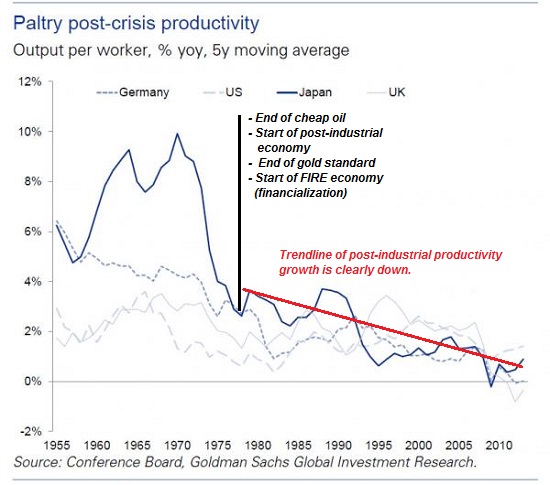
Not coincidentally, wages as a percentage of GDP (i.e. of all economic activity) topped out around the same time: 1970.
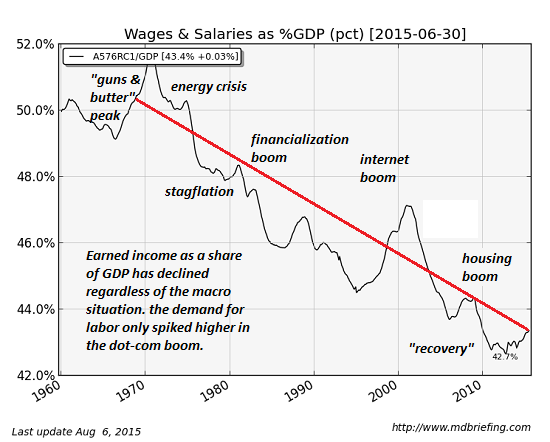
Here's the participation rate going back to the 1950s. I've noted the key developments: the mass entry of women and the Baby Boom into the work force in the late 1960s-early 1970s; the peak of financialization and debt-based speculation in the 1990s through 2007; the advent of automation capable of eating not just low-skill jobs but middle-class jobs, and the diminishing return on further financialization/speculative bubbles.
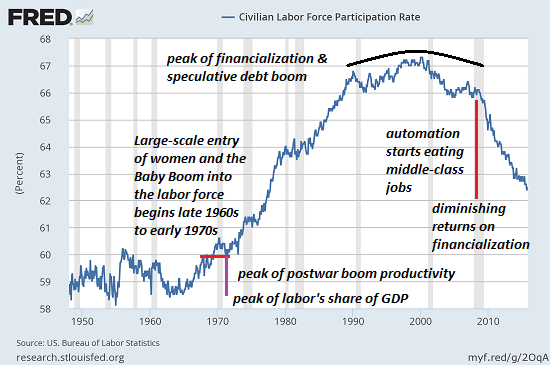
In the big picture, while the economy added jobs, workers took home a diminishing share of the economy's expansion.
The participation rate of those in their peak earning years 25-54 has declined to the levels of the early 1980s, before the financialization/tech booms took off.
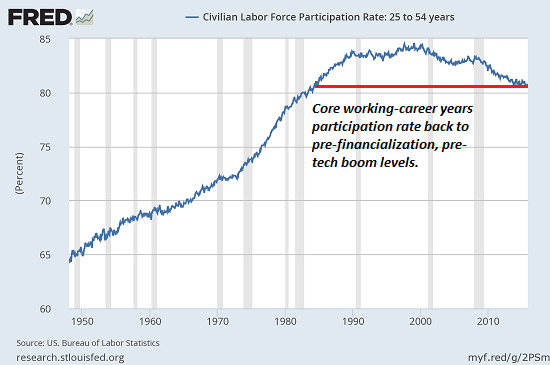
The participation rate of women mirrors this long-term erosion.
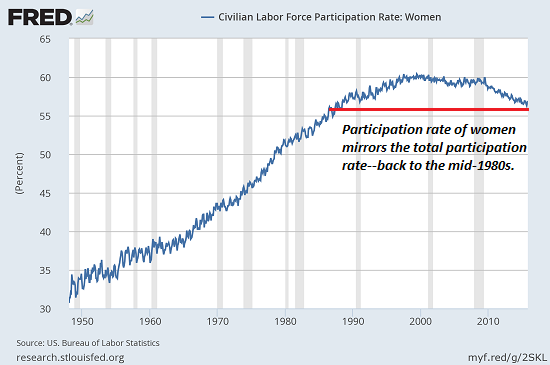
The participation rate of men has been declining for 60 years. This parallels the decline of male-dominated sectors (factory floors, manual labor, etc.) and the relative rise of sectors such as education and healthcare that have been traditionally mainstays of employment for women.
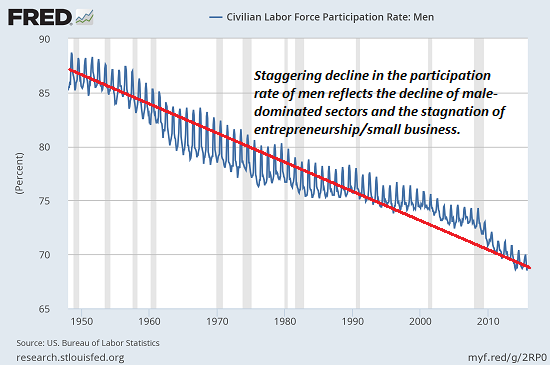
But I propose a second factor--the massive decline in self-employment and entrepreneurship. This is not to say that women aren't self-employed or entrepreneurs; it is merely to point out the correlation of male participation and self-employment.
Prior to the dominance of Corporate America and regulation-loving government, many men were self-employed in male-dominated sectors such as auto mechanics, construction, appliance repair, yard maintenance, etc.
Regulatory burdens, high taxes, high rents, competition from Corporate America franchises, etc. have made it increasingly difficult to be self-employed/open a small business for men and women alike.
But the rising burdens have impacted men to a greater degree, as many male-dominated sectors such as mechanics, construction, etc. were traditional strongholds of self-employed/small businesses. In comparison, the female-dominated sectors of education and healthcare are highly centralized and mostly funded by the government or state-mandated funding sources such as college loans, insurance, etc.
Combine this with the decline of entrepreneurship, and you get a bubbling brew that is toxic to self-employment/small business. What entrepreneurship remains in the working class is often black-market/cash-economy, and thus is not included in these statistics.
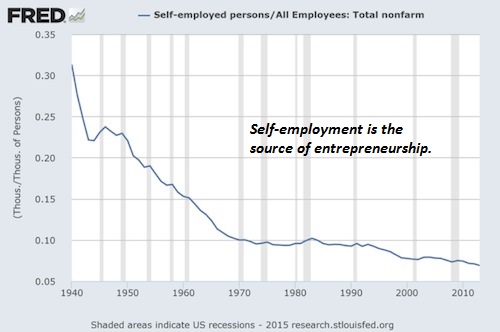
Much has been made of the rising participation rate of those 55 and over (me included). But if we glance at the chart, we see the 55+ participation rate has merely bounced back up to the participation levels of the "golden age" 1960s.
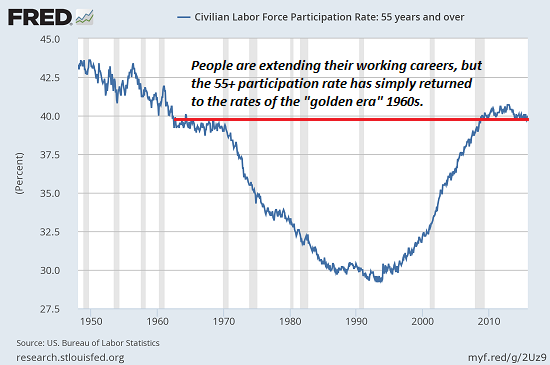
In other words, the anomaly was the drop in 55+ participation, not its rise to historic norms.
Gordon and I cover many other topics inThe Participation Rate Mystery--Solved (25 min.), including the impact of the soaring costs of childcare:
My new book is in the top 10 of Amazon's category of international economics: A Radically Beneficial World: Automation, Technology and Creating Jobs for All. The Kindle edition is $8.45, a 15% discount from its list price of $9.95.
NOTE: Contributions/subscriptions are acknowledged in the order received. Your name and email remain confidential and will not be given to any other individual, company or agency.
|
Thank you, Sweet K. ($5/month), for your monstrously generous contribution to this site--I am greatly honored by your support and readership. |

Discover why Iím looking to retire in a SE Asia luxury resort for $1,200/month.